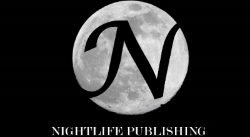If I can write a book, you can write a book. This article just offers a few tips to help you explore your own creative gifts.
When writing, I’ve always found it helpful to understand the vast majority of all fictional plots boils down to a struggle to achieve a goal. A protagonist or hero has an object of desire that is material or situational. Maybe they want to get a rare item or get into a relationship with a particular person. To get what she wants, your heroine has to exert effort against everything that stands between her and her goal. The power and intensity of her obstacles will define both your heroine and the strength of your story. But where do those obstacles come from and how can we build them into the story in a way that tests the heroine in the most satisfying manner for readers?
I’ve found one answer in playing with the different levels of conflict.
Three Levels of Conflict
A level of conflict is a source of antagonism that stands between your protagonist and their goal. Robert McKee's book Story defines three major levels of conflict:
- Internal: where the thoughts, feelings or physical characteristics of a protagonist block achievement of the goal
- Interpersonal: where relationships with other people or groups block achievement
- Extra-personal: where institutions, natural phenomenon and situations block achievement
As an example, let's say you're writing a story about a Jewish boy living in Jerusalem. He has just seen a beautiful Arab girl and in that moment realizes he’s in love. What obstacles does Adam face in his quest for a relationship? As a writer, you have several options:
- Internal: His shyness, lack of experience with women and unattractive features could get in the way of his budding romance.
- Interpersonal: The girl might resist his advances for her own reasons, or she might have a boyfriend who wants to remove him from the picture. Also, his parents could try to prevent him from getting involved with an Arab girl. The girl's brothers might threaten him with violence. His own friends might reject him.
- Extra-personal: The wider Arab Israeli conflict could also inhibit our hero. Hezbollah bombings into the settlements could disrupt Adam's life or create a curfew situation. A suicide bomb could destroy everything or even kill the girl. Protests, strikes or other mass social events could tear their relationship apart before it even gets started.
This is just a few examples of what this boy might be up against. If he is able to win this girl's love, the obstacles he'll have to overcome could make an amazing story.
The type you choose is often a function of genre. An action adventure might have heavy interpersonal and extra personal conflict when the hero battles the arch villain on the top of a mountain in a blinding snow storm, but very little internal conflict. A cozy mystery might have strong internal focus as the detective quietly strains her intellect to solve the crime. Every style of writing can tap into each type of conflict, but some genres lend themselves to specific conflict types.
Conflict as Spotlight
The best way I've found to develop conflict in my work is to focus on the aspects of my protagonist that I want to reveal and then creating conflicts that explore those traits. One of my main characters in my new novel Smoke and Shadow is a man named Harrison Trent. At the most basic level, Harrison’s conflict is internal. He wants to forget the mistakes he’s made in his past and he is willing to place himself in extreme danger because the immediacy of a life and death struggle is the only way he can forget the things he’s done. To show his dedication to this goal, I put several obstacles in his path every time he steps into the readers mind.
The best stories have the strongest conflicts. While it's not necessary to throw every obstacle at every character in every story, a weak story is most often the result of weak antagonists. Pit your heroine against the strongest combination of antagonism that you can think of. Your characters will hate it, but your readers will thank you for it.
Now go write something. ;-)
Gamal
